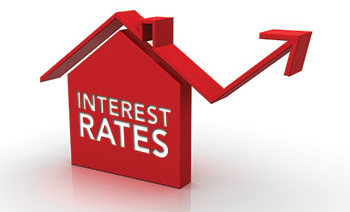To see how loan costs will change later on, how about we take a gander at the patterns we’ve seen since 2010: Interest rates tumbled to noteworthy lows, and purchasers delighted in those low rates on new home loans. Rates bottomed out at a normal of 3.66% in 2012, then rose just marginally in the years since. In 2015, the yearly normal  rates rested at 3.85%.
rates rested at 3.85%.
What’s next? Loan cost forecasts for 2016 at first said we’d at long last see them begin rising once more. In any case, a few occasions have changed that viewpoint. Between the astonishing Brexit vote and the tumultuous presidential decision cycle, homebuyers need to take a look at re-assessed loan fee expectations before securing a home loan.
To guide purchasers for whatever remains of 2016 and past, here are a few bits of knowledge, forecasts, and best taught surmises. In case you’re hoping to purchase a home soon, look at what loan costs could look like on your home loan.
- Predicting interest rates can help strengthen your strategy
Forecasts are simply taught educated guesses, and depending on an estimate isn’t insightful. Be that as it may, there’s still a considerable measure of significant worth in making these expectations. “It can help us thoroughly consider what we may do if the loan costs go up, down, or sideways,” clarifies Meg Bartelt, MSFP and organizer of Flow Financial Planning. “This makes our arrangement more grounded and stronger.
- Interest rates seem unlikely to rise anytime soon
“Interest rates will stay lower longer than most people would imagine,” says Kirk Chisholm, principal of Innovative Advisory Group.
Chisholm brings up that there is very little space to raise positive loan fees. “It is profoundly unrealistic that 10-year Treasury loan costs will transcend 3% sooner rather than later,” he says.
Joseph Hogue concurs that loan fees aren’t rising at any point in the near future. “There is more than $13 trillion in sovereign securities universally with negative yields, somewhat over 33% of the business sector,” he clarifies. “The Fed can change fleeting rates through the government stores rate. Be that as it may, the long end of the yield bend — which influences since a long time ago dated obligation like home loans — will stay low for quite a while.”
- Prepare for when interest rates do rise
“Commentators have been saying that interest rates will rise for the last six or seven years, and it hasn’t happened yet!” says Daniel Frankel, CFP and founding principal of Wealth Collab.
Frankel says securing and locking in low interest rates at this time is the best strategy.
- Interest rates shouldn’t drive your purchase
Don’t allow the interest rates to allow you to make an impulsive decision about the purchase of your new home.
“Interest rates shouldn’t be the main factor for anyone looking to purchase a home,” Klumpp says. “Even if rates were to increase 0.25% or 0.50%, we’re still at or near historically low mortgage rates. For someone looking to purchase a home for the long term, it’s a terrific time to buy.”
- Consider other factors before you buy
Other factors should be considered when purchasing a home. You should have money for your down payment saved and know that your budget should be able to afford the payment.
When looking to buy a home other cost such as the price of the home, the ongoing maintenance, taxes, homeowners insurance and even other items such as extra furniture and other household items. Evaluate the purchase of a new home and take everything into account and not just the one factor like interest rate.
Published on 2016-09-12 12:59:56
